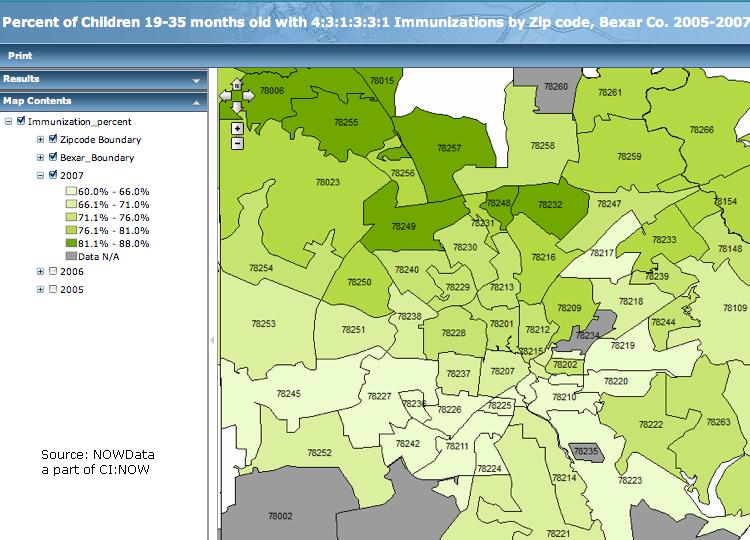Every parent knows the deep-seated desire to protect their children from harm, and when it comes to their health, this instinct is even more pronounced. The sight of a little one suffering from a cough, cold, or fever can be heart-wrenching, stirring a mix of concern and helplessness. However, while it’s impossible to shield children entirely from every germ or virus, there are proactive steps you can take to significantly reduce their risk of falling ill. This guide is designed to empower you with practical, effective strategies to prevent common childhood illnesses, offering peace of mind and healthier days for your family. By understanding the key preventive measures and making them a part of your daily routine, you can create a nurturing environment that supports your child’s well-being and resilience.
Understanding the Basics of Childhood Immunizations
Childhood immunizations play a crucial role in safeguarding the health of children by preventing various infectious diseases. Vaccines work by stimulating the immune system to recognize and fight pathogens without causing the illness itself. This proactive approach not only protects the vaccinated child but also contributes to community immunity, reducing the spread of diseases.
Parents often have questions about which vaccines are necessary and when they should be administered. Here’s a simple breakdown of some essential vaccines and the diseases they help prevent:
- MMR Vaccine: Protects against measles, mumps, and rubella.
- DTaP Vaccine: Shields children from diphtheria, tetanus, and pertussis (whooping cough).
- Polio Vaccine: Prevents poliomyelitis, a potentially debilitating disease.
- Hib Vaccine: Guards against Haemophilus influenzae type b, which can cause severe infections.
| Vaccine | Age Group | Disease Prevention |
|---|---|---|
| MMR | 12-15 months, 4-6 years | Measles, Mumps, Rubella |
| DTaP | 2, 4, 6, 15-18 months, 4-6 years | Diphtheria, Tetanus, Pertussis |
| Polio | 2, 4, 6-18 months, 4-6 years | Poliomyelitis |
| Hib | 2, 4, 6, 12-15 months | Haemophilus influenzae type b |
Staying informed and following the recommended vaccination schedule is vital for ensuring children are protected as they grow. If you have any concerns, discussing them with a trusted healthcare provider can offer clarity and peace of mind. Remember, timely vaccinations are a key component of a healthy childhood.

Creating a Clean and Safe Home Environment
Ensuring a clean and safe environment is paramount for preventing childhood illnesses. Start by establishing a regular cleaning routine that focuses on high-touch surfaces like doorknobs, light switches, and toys. Consider using eco-friendly cleaning products that are effective yet gentle enough for little ones. Incorporate the following practices into your routine to maintain a hygienic home:
- Wash hands frequently with soap and water, especially before meals and after using the bathroom.
- Sanitize toys regularly, especially those frequently used or shared with other children.
- Ventilate rooms daily to ensure fresh air circulation and reduce indoor pollutants.
It’s also important to focus on the kitchen and bathroom areas, as these can be hotspots for germs. Keep these spaces clean and dry to prevent mold and bacterial growth. Below is a simple guide to follow:
| Area | Action |
|---|---|
| Kitchen Countertops | Wipe with a disinfectant after meal preparation. |
| Bathroom Sinks | Clean daily with an anti-bacterial cleaner. |
| Refrigerator | Check and remove expired items weekly. |
By integrating these steps into your daily routine, you create a nurturing space that minimizes the risk of common illnesses, allowing your child to thrive in a safe and healthy environment.

Encouraging Nutritious Eating Habits for Better Immunity
- Colorful Plates: Introducing a variety of fruits and vegetables can make meals more visually appealing to children. Encourage them to eat a “rainbow” each day by including foods like carrots, spinach, blueberries, and red peppers. These are packed with essential vitamins and antioxidants that bolster the immune system.
- Probiotic Power: Incorporate foods rich in probiotics, such as yogurt or kefir, to promote a healthy gut flora. A balanced gut can significantly impact overall immunity, helping to fend off common childhood illnesses.
- Hydration is Key: Ensure children stay hydrated by providing plenty of water throughout the day. You can also offer herbal teas or water-infused with fruits like lemon or cucumber to make it more enticing.
Incorporating the following nutrient-rich foods into daily meals can make a significant difference in your child’s health:
| Food | Nutrient | Benefit |
|---|---|---|
| Sweet Potatoes | Beta-carotene | Boosts immune response |
| Almonds | Vitamin E | Enhances immune function |
| Broccoli | Vitamin C | Strengthens immunity |
To make these nutritious habits stick, involve children in meal planning and preparation. This not only teaches them about healthy eating but also makes them more likely to try new foods. Celebrate small victories when they choose a healthy option, and remember, patience and persistence are key.

Fostering Open Communication with Healthcare Providers
Establishing a strong line of communication with your child’s healthcare providers is crucial for preventing common childhood illnesses. By fostering open dialogue, you ensure that any concerns or questions you have are addressed promptly. This proactive approach not only enhances the care your child receives but also empowers you as a parent to make informed decisions. Consider the following strategies:
- Prepare for Appointments: Before visiting the doctor, jot down any symptoms, questions, or concerns you have. This preparation ensures you cover all necessary points during your appointment.
- Ask for Clarification: If medical terms or instructions are unclear, don’t hesitate to ask for further explanation. Understanding the advice given is essential for effective implementation.
- Maintain an Open Dialogue: Share relevant information about your child’s lifestyle, diet, and habits, as these factors can significantly impact their health.
Consider keeping a health journal for your child. This can be a simple notebook or a digital document where you record information about their health, medications, and any notable changes. This journal can be a valuable resource during medical consultations, providing a comprehensive overview of your child’s health history.
| Action | Benefits |
|---|---|
| Prepare Questions | Ensures all concerns are addressed |
| Clarify Instructions | Improves understanding and compliance |
| Share Health Journal | Provides comprehensive health history |








































